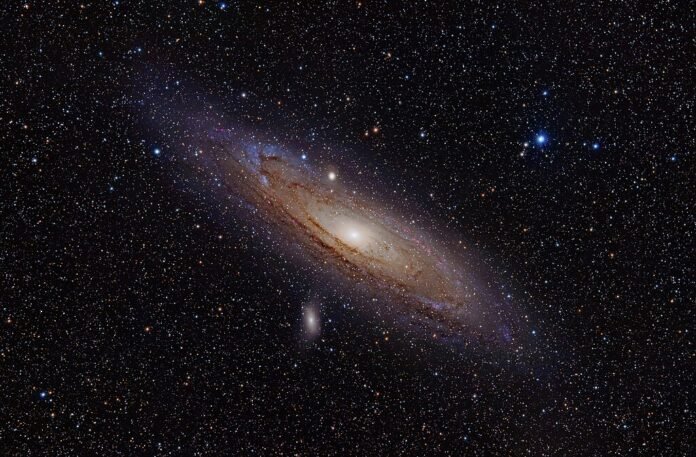ESA’s Euclid telescope captures an eerie Einstein ring’ around a known galaxy, stunning experts.
A stunning new cosmic revelation has left astronomers astounded. The European Space Agency’s (ESA) Euclid space telescope has detected a rare and mesmerising ‘Einstein ring’ of light encircling a nearby galaxy—something never seen before in this region. The remarkable discovery, detailed in the journal Astronomy and Astrophysics, demonstrates Euclid’s unparalleled ability to unearth hidden cosmic phenomena.
The phenomenon, named after Albert Einstein, occurs due to gravitational lensing—where a massive object distorts the light from a much more distant galaxy. In this case, a galaxy 4.4 billion light-years away is bending light around another galaxy, NGC 6505, which lies a relatively close 590 million light-years from Earth. The result? A hauntingly perfect ring of light surrounding the nearer galaxy.
“This is a spectacular find,” said Valeria Pettorino, Euclid project scientist at ESA. “NGC 6505 has been known to astronomers since 1884, yet this glowing ring had never been seen before. It proves just how powerful Euclid is in uncovering unseen wonders.”
The Euclid mission, launched in July 2023, is on a six-year journey to map the ‘dark universe,’ investigating dark matter and dark energy, which remain some of the greatest mysteries in astrophysics. Scientists expected breathtaking images of the cosmos, but finding an Einstein ring in such a well-documented region has exceeded expectations.
“All strong gravitational lenses are rare, but this one is special,” said lead author Conor O’Riordan from Germany’s Max Planck Institute for Astrophysics. “It’s incredibly close to Earth compared to most others we study, and its near-perfect symmetry makes it an exquisite example of Einstein’s predictions in action.”
Gravitational lensing is one of the most significant tools in modern cosmology, allowing astronomers to probe distant objects and study the distribution of dark matter. This newly observed Einstein ring, glowing like a cosmic apparition, may hold further secrets about the structure of the universe.
ESA scientists believe Euclid’s capabilities will lead to even more unexpected discoveries. If it can unveil hidden phenomena in well-known regions, what else might it reveal lurking in the depths of space?
For now, this eerie cosmic halo remains a breathtaking testament to Einstein’s theory—and a reminder that the universe still has plenty of surprises in store.
